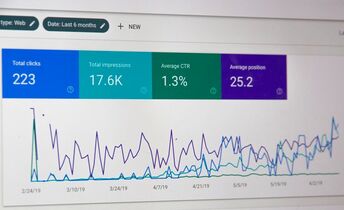 Photo by William Iven on Unsplash Photo by William Iven on Unsplash You are a nonprofit executive. You eat lunch at your desk regularly, 50 hours a week is a "short" week, and you're understaffed. You are the head of human resources, lead fundraiser, and mentor to a team of young idealists. You don't have time to become an expert in social media, but you don't have to be. Here are five tips for faking it. 1. Have a communications plan. This plan does not have to be complicated. It could be as simple as, "We will post to Facebook three times a week to share upcoming events, recent successes, fundraisers, or interesting news articles our supporters will appreciate." Although I recommend something more complex, if you have NO strategy, simple is better than nothing. This is the template I use with my clients and will help you and your team determine your social media goals.  Photo by Web Hosting on Unsplash Photo by Web Hosting on Unsplash 2. Set yourself up for success. Make sure your GuideStar profile is up-to-date, and you have, at minimum, a bronze seal. More and more, organizations (including Facebook and Amazon) are using GuideStar to vet nonprofits. If you don't use Facebook, set up a page but don't publish it, this way your supporters can still choose your nonprofit for a fundraiser. If you do use Facebook, get your donate button set up. Register for AmazonSmile. A lot of companies are making it easy to help raise money for nonprofits, take advantage of the opportunities. 3. Create good content. Just like your fundraising materials, proposals, and reports, your social media posts should be succinct, on point, and demonstrate impact. More people are scanning on their phones than looking at computers, so you need to make your point and do it fast. Use images whenever possible — link to other documents. Share partners' content to increase awareness of your organization. Remember that if you wouldn’t pause for it when you are scrolling through your phone, your supporters won't either. 4. Review your data monthly. Long are the days that we send a mailer and only know if it was opened if we get the pre-stamped envelope back. The best part of technology is you can see what content resonates with your supporters. Your apps will have this info readily available and sometimes, you can sign-up for monthly summary emails. The number of metrics available can be overwhelming, but start with:
5. Sign-up for the Nonprofit Tech for Good email list. No, you won’t have time to read it every week, and if you don’t, feel free to delete it — no one polices your newsletter consumption except for you. But when you do have time, I guarantee you will find at least one item that is actionable and easy. Heather Mansfield does a fantastic job of sharing the information that nonprofits need to know. These tips are by no means a plan to master social media, nor are they intended to be. Social media trends are always changing. Google changes how they rank websites, and Facebook changes how they show content. Nonprofit executives don't have time to keep up with it all. You are likely going to pass some (or all) of this responsibility to someone else. That's ok, be sure you approve the communications plan, and you review the data once a month to ensure that your team is spending their limited time effectively! BONUS TIP: Pick one webinar a month from the Nonprofit Tech for Good list (or anywhere else), sign up, and put it on your calendar. Sometimes, you won't have time to listen in, and that's ok. Usually, the hosts will send you an email with a recording of the webinar after the event, and you can watch at your convenience – maybe when you are eating lunch at your desk reviewing your monthly social media data!
0 Comments
Your comment will be posted after it is approved.
Leave a Reply. |
annisa's blogIncludes professional topics, as well as thoughts about politics. I also keep a blog on Medium that includes these, as well as more personal posts. archives
January 2020
categories
All
|

 RSS Feed
RSS Feed